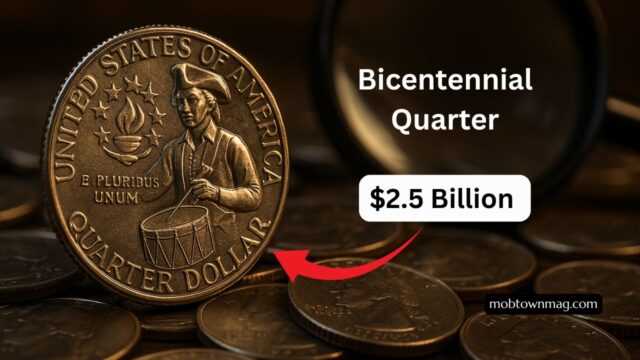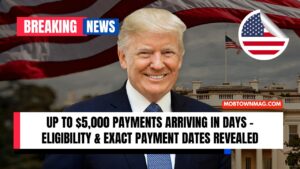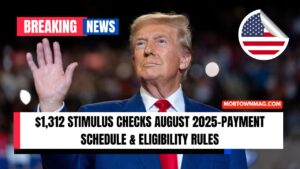In recent months, headlines have circulated claiming that a Bicentennial quarter is worth $2.5 billion and is still out there in circulation. While this sounds exciting, the reality is different.
The 1776–1976 Bicentennial quarter, featuring the famous “Drummer Boy” design, is a historic and collectible coin, but most of them are not rare or worth millions.
In this article, we’ll explain the real facts, values, mintage numbers, and special error coins that can actually bring you a big payday.
The 1776–1976 Bicentennial quarter, popularly known as the “Drummer Boy” quarter, is one of the most celebrated coins in U.S. history. Released to mark America’s 200th year of independence, it quickly became a collector favorite.
Recently, viral headlines have claimed that a Bicentennial quarter worth $2.5 billion is still in circulation. While this dramatic claim has caught global attention, the truth is much simpler.
Most of these coins are still worth their face value of 25 cents, but certain rare versions—like silver strikes, high-grade certified coins, and unique mint errors—can be worth hundreds or even thousands of dollars.
This article explores the real facts, values, mintages, and collectible insights for 2025, separating myth from reality.
What is the Bicentennial Quarter?
The Bicentennial quarter was released in 1975 and 1976 to celebrate 200 years of American independence. Instead of the regular eagle on the back, it featured a colonial drummer with a victory torch surrounded by 13 stars.
- Obverse (front): George Washington’s portrait.
- Reverse (back): “Drummer Boy” design by Jack L. Ahr.
- Date: Dual year marking 1776–1976.
These coins were minted in both circulating copper-nickel clad versions and collector silver versions.
How Many Were Made?
Because this was a national celebration, the U.S. Mint produced a huge number of these quarters:
| Mint | Mintage | Details |
|---|---|---|
| Philadelphia (no mint mark) | 809,784,016 | Circulation coins |
| Denver (D) | 860,118,839 | Circulation coins |
| San Francisco (S) | ~7 million clad proofs | Proof coins in sets |
| San Francisco (S) | 4.9 million silver uncirculated | 40% silver collector sets |
| San Francisco (S) | 4 million silver proofs | Premium 40% silver proof sets |
Total made: Over 1.6 billion quarters, plus silver and proof sets.
Why the “$2.5 Billion” Story is Fake
If over 1.6 billion were minted, most Bicentennial quarters are still worth 25 cents in everyday circulation. The $2.5 billion claim is a viral internet hoax meant to grab attention. No auction house or collector has ever sold a Bicentennial quarter for anywhere near that amount.
Real 2025 Values of Bicentennial Quarters
While the billion-dollar story is false, some coins do carry premium value today in 2025:
- Circulated common coins: 25¢ – $1
- Uncirculated coins (MS60–MS64): $2 – $10
- High-grade certified coins (MS67–MS68): $1,000 – $5,000+
- Silver proof coins (PR69–PR70): $100 – $500+
- Rare error coins: $500 – $12,000+ depending on type
One of the highest confirmed sales was a 1976-S silver quarter graded MS69, which sold for $19,200 at auction.
Special Error Coins to Look For
Some error Bicentennial quarters are worth thousands:
- Double-strike errors
- Off-center strikes
- Wrong planchet errors (quarter struck on dime or cent blank)
- Doubled-die obverse (DDO) varieties
These are very rare but highly collectible.
How to Identify a Silver Bicentennial Quarter
Not all Bicentennial quarters are clad. Some were made in 40% silver, sold in collector sets from San Francisco. To identify:
- Check the mint mark: Must be “S” (San Francisco).
- Weigh the coin: Silver quarters weigh about 5.75g, while clad ones weigh 5.67g.
- Edge color: Silver quarters lack the copper-colored edge of normal clad quarters.
Collector Tips for 2025
- Check condition: Coins with sharp details and no wear are worth grading.
- Look for silver: Collector versions hold more value than clad coins.
- Error hunting: Always check for unusual strikes or doubling.
- Get certification: PCGS or NGC certification greatly increases value.
The Bicentennial quarter is an iconic U.S. coin, but the $2.5 billion story is nothing more than a myth. Most are worth face value, but special silver issues, rare high grades, and error coins can bring in hundreds to thousands of dollars.
have a Bicentennial quarter in your change, it’s worth checking closely—you might just have a hidden treasure, though not a billion-dollar one.
The Bicentennial quarter remains a symbol of American pride and history, but the idea that one is worth $2.5 billion is nothing more than a viral hoax.
While most are only worth 25 cents, serious collectors know that exceptional examples—whether ultra-high grade, silver proof, or rare error coins—can fetch thousands of dollars at auction.
The key to finding value lies in knowing what to look for, from the mint mark to condition and unique varieties.
So, the next time you come across a “Drummer Boy” quarter, don’t dismiss it right away—while it may not make you a billionaire, it could still be a small treasure in your pocket.
FAQs
Are Bicentennial quarters still in circulation?
Yes, billions were minted, so you can still find them in change today.
Which Bicentennial quarter is worth the most?
The 1976-S silver MS69 example, which sold for $19,200, is among the highest known values.
How do I know if my Bicentennial quarter is rare?
Check for errors, high grades, or silver composition. Most circulated coins are common, but rare varieties can be valuable.




